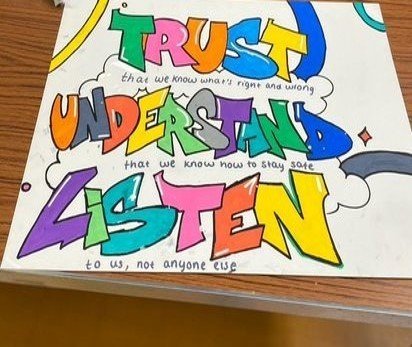Newsletter April 2023
Check out our April 2023 Newsletter for updates on the course and some recent cases that have been in the news recently!
A 10-year-old girl spent more than £2,500 on the gaming site Roblox after changing the password on her family’s iPad tablet without her mum realising.
Georgina Munday, from Denbighshire, has warned other parents to “be vigilant”.Tesco Bank initially refused a refund but reconsidered and apologised after BBC Radio 4’s You and Yours took up the case.Roblox said it had “a robust policy” from unauthorised payments and Apple said pre-purchase alerts could be used.Roblox allows users to create their own games but also offers in-app purchases to upgrade the user’s avatar with things like clothes or accessories and offers some pay-to-play games.
Roblox support page at https://www.roblox.com/support.
Advice
Andy Robertson, creator of Taming Gaming offers advice on Roblox for Internet Matters here
For privacy, it makes sense to cover your webcam. It can be as basic as putting a strip of opaque tape over the cam dot on your laptop, or a sticky strip (used to mark pages in a book) or a cloth cover – even a baby’s sock!Some webcams have a ‘door’ in the case which you can keep closed unless you’re using it. Cheap rigid plastic webcam covers that slide to open or close, can be found online.It would be wise to try and discourage cameras in bedrooms or bathrooms. However too many people including adults, take their phones with them into the bathroom!Encourage children to take care of their phone – it might get splashed on or worse still fall into a toilet (this does happen. But seriously – children have shared photos of little siblings in the bath which have been subsequently misused online, or provocative shots of themselves that bathroom mirrors seem to encourage in the privacy of that space.
Children’s data not protected
UK’s ICO issues £12.7 million fine to Tik Tok for failing to abide by data protection rules which aim to safeguard children online.
The Information Commissioner’s Office said TikTok had allowed as many as 1.4 million children under 13 to use the service in 2020, against UK data protection rules that require parental consent to use children’s personal information.It argues that TikTok should have been aware that children were using the service – it is one of the most popular platforms among children.The investigation found that Tik Tok did not take enough steps to identify underage users or remove them from the platform, even though it had rules barring children under 13 from setting up accounts. Peer pressure and fear of being isolated or talked about often drives children to join social media apps before the appropriate age. These pressures override rules and few children would defy their friendship group.Click here to read more of what the investigation foundor for help click hereCover your cam.
Secure your WiFi.
Hackers can access your personal devices if you are using insecure network connections. Check that your WiFi and home networks are secure, as explained in Module 1 of our course Fostering in a Digital Age.Do you and children you care for use public Wi-fi? if it’s public, it’s less secure. Someone could gain control of your device by simply logging onto the same network and hack your device. Never log on to bank accounts or other private accounts from public wi-fi.If wi-fi access is too restrictive at home, it can drive kids to use public wi-fi in shops, shopping centres, buses and other public spaces.At home, if your network is large enough, consider installing a firewall or a Virtual Private Network (VPN) to increase security.
In Other News
- Newsletter
- Uncategorised
- Newsletter
- Newsletter










